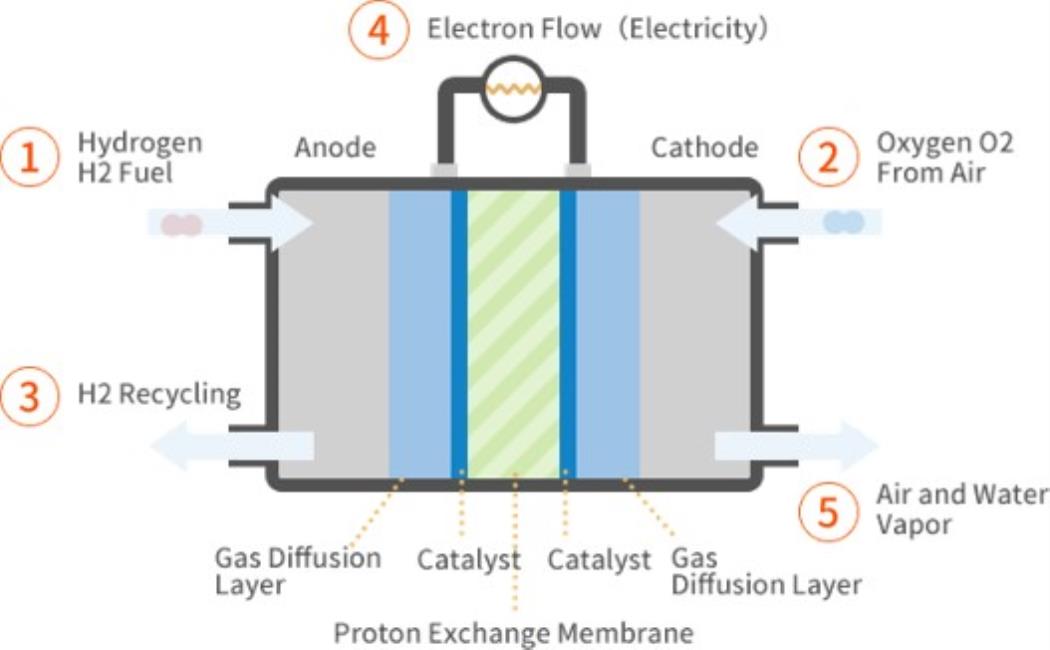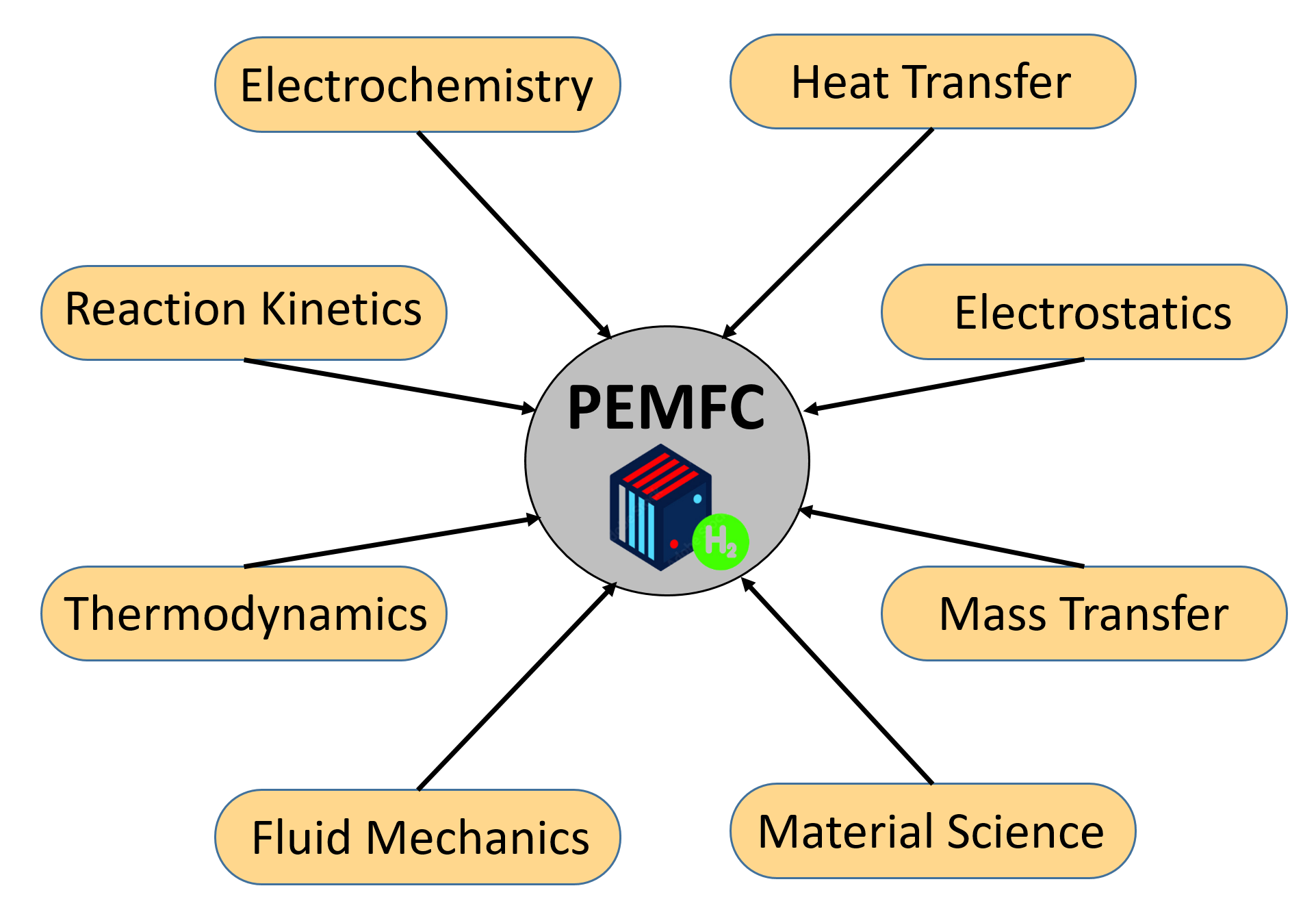
Mr. Faseeh Abdulrahman, Dr. Muralikrishna Khandavilli, Prof. S. Mani Sarathy
Objective
The objective of this project is to model the H2 powered PEMFC, an emerging alternative to fossil fuel-driven engines. The following aspects would be the primary focus area for the low temperature (up to 120 °C) PEMFC:
Methodology
The COMSOL package is being used to model the various aspects of PEMFC like the effect of temperature, relative humidity, gas diffusion layer morphology, catalyst loading at anode, cathode and hydrogen pressure. The effect of these factors on the potential difference and electric current would be understood. In the parametric study, the polarization curve of the PEMFC is employed for studying its performance. Toluene could be a major impurity as methyl cyclohexane acts as a carrier for hydrogen, which leaves toluene traces in hydrogen gas. The effect of toluene on potential difference over time and effects of cation impurity on the catalyst and ionomer would be understood and modeled.

Expected outcome
This study would result in a COMSOL based user-friendly model of PEMFC that the user can use to understand the effect of geometry, pressure, temperature, relative humidity, membrane structure, catalyst loading, gas diffusion layer characteristics and impurities.
